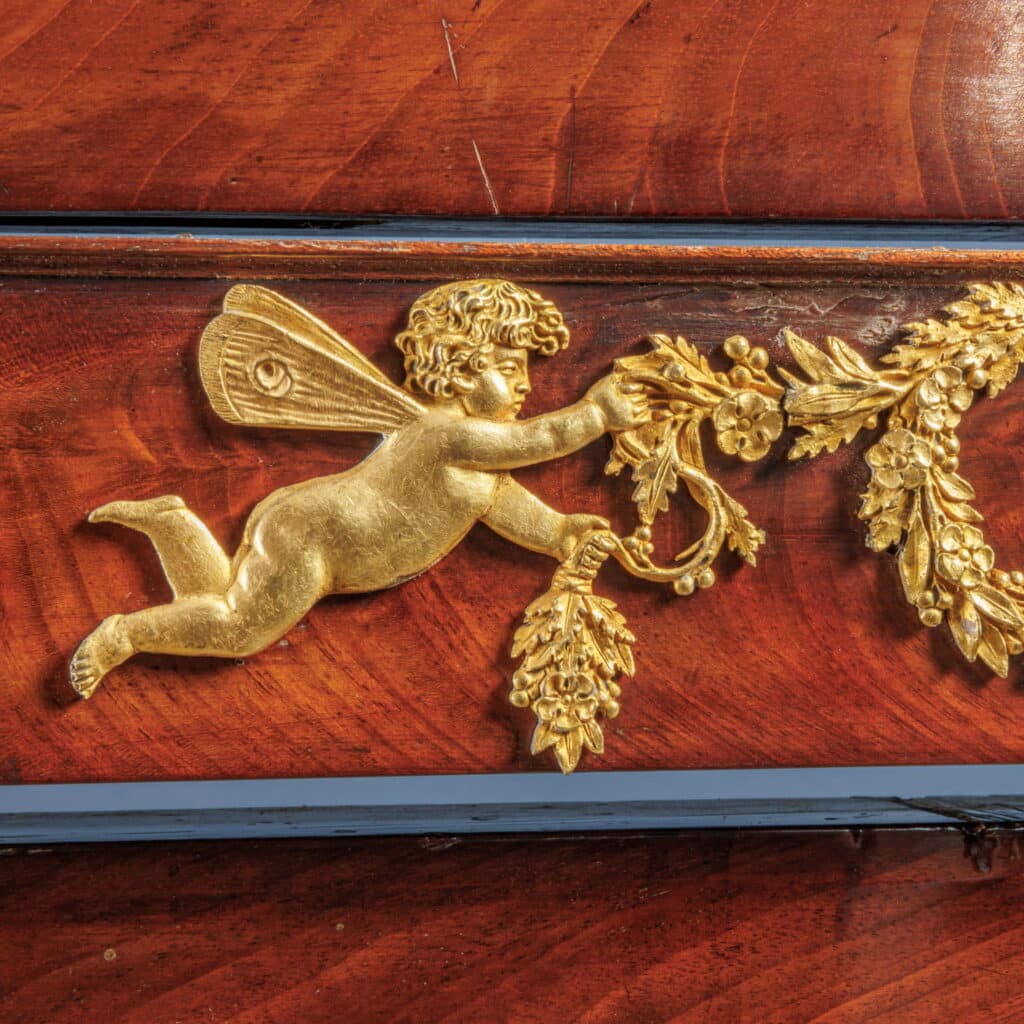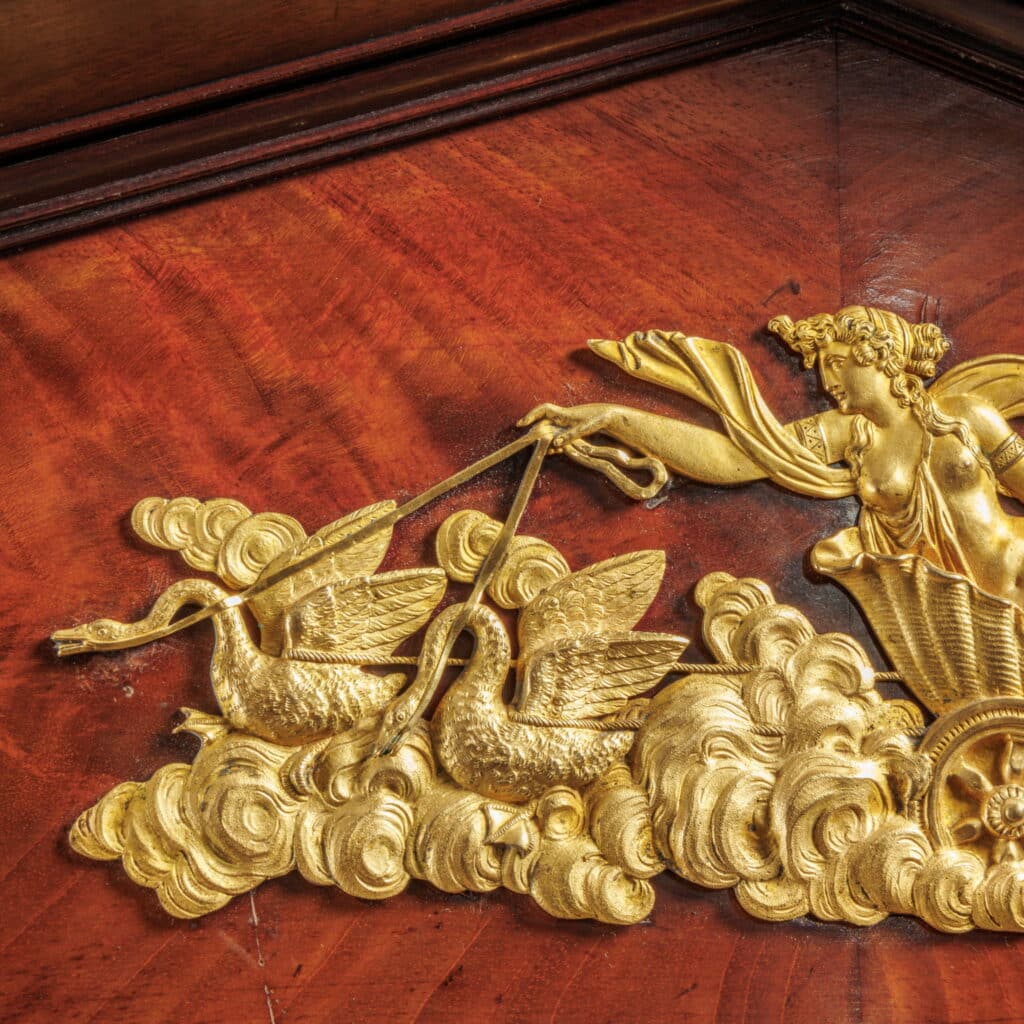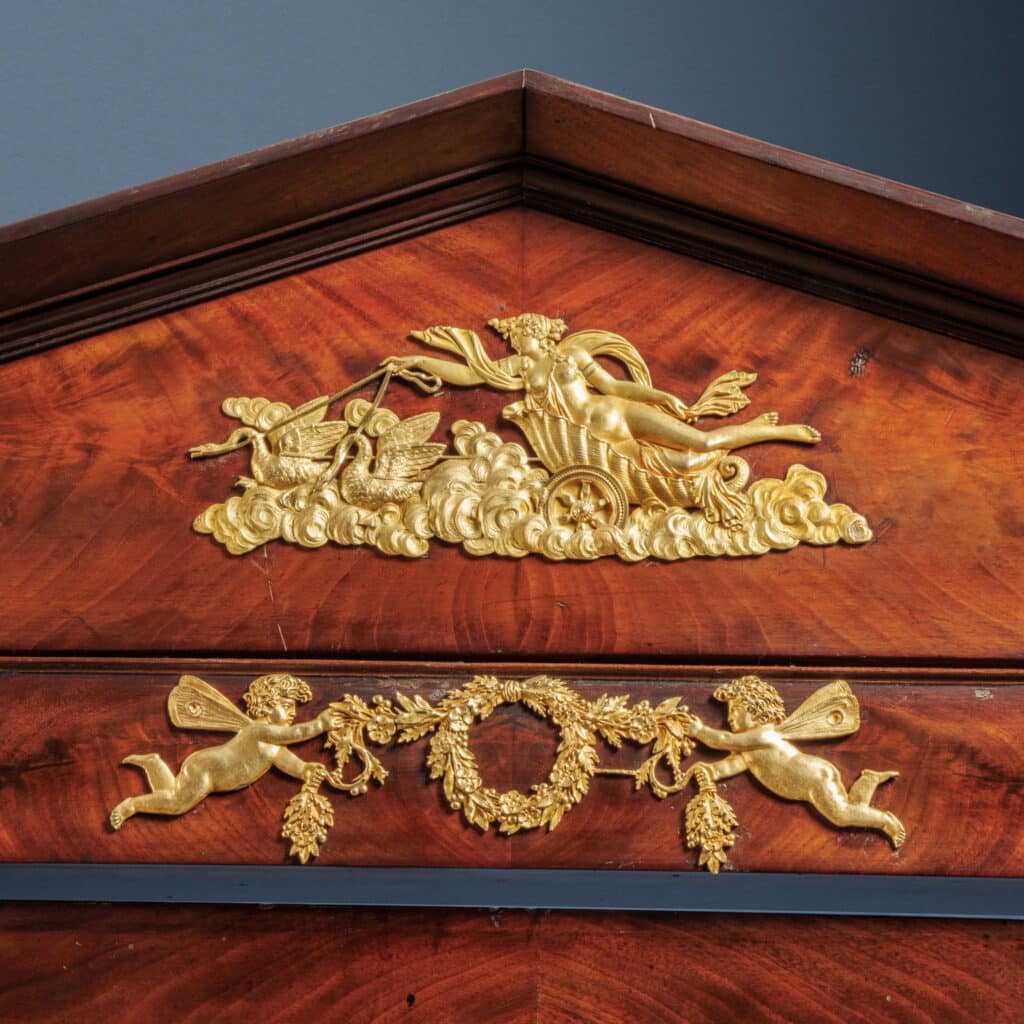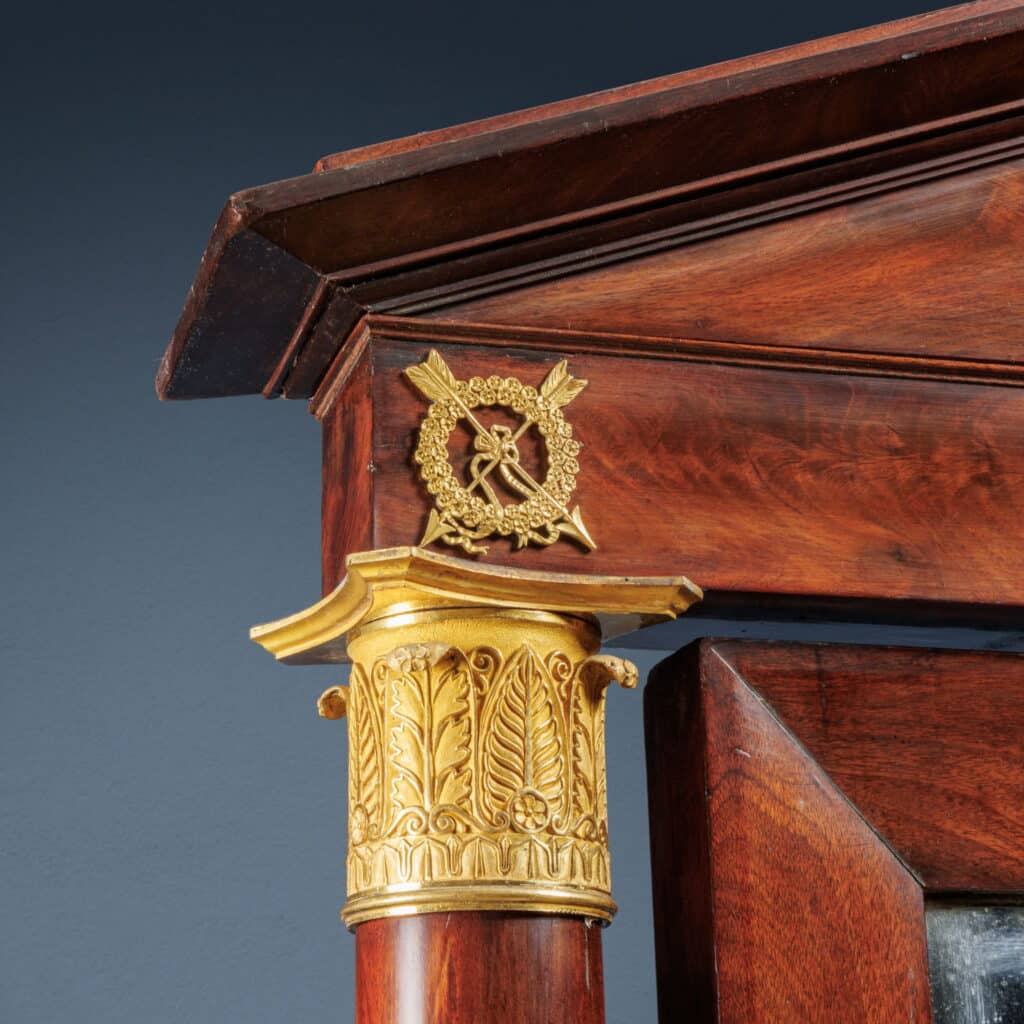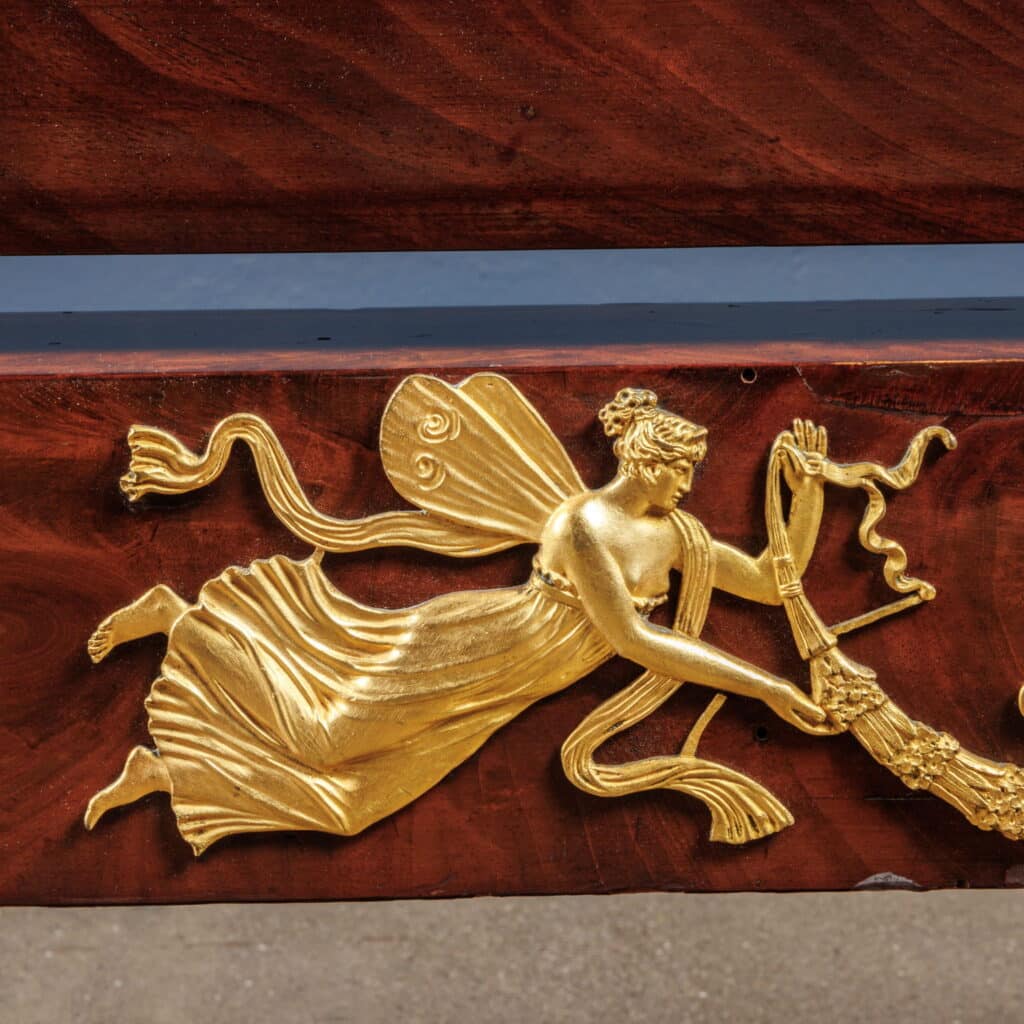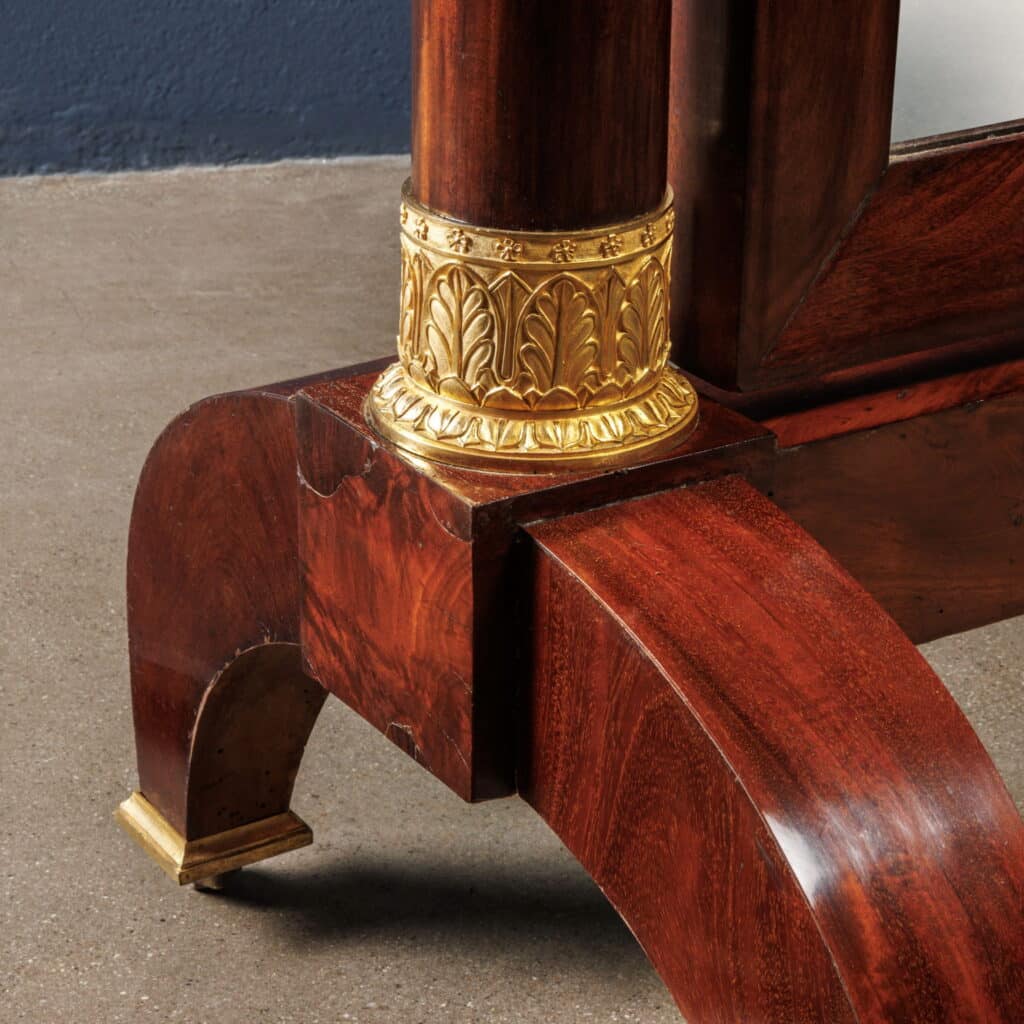Cheval Mirror, Youf Brothers Lucca, second half of the 1910s
Description:
Cheval mirror veneered in mahogany feather, oak, beech and poplar frame; decorated with gilded bronze applications. The uprights consist of columns supporting the gable moulding; the saber-shaped feet are fitted with small wheels.
Dimensions: 210 x 110,5 x 57 cm
CODE: ANTSPE0000645
Historical-artistic analysis:
The first confirmation that the cabinetmaker who made this piece of furniture was trained in Paris is provided by the woods used and their workmanship: oak was in fact used for the structure, a very compact and durable wood, frequently used in French production along with beech, in this case side by side with poplar, more common in Tuscan furniture. Declaredly French, moreover, is the choice of mahogany for the veneer. An exotic essence that France could dispose of in large quantities thanks to its vast colonial empire, it is instead more difficult to find in Italy and, at least in these years, was mostly used in the production of the most prestigious furniture. The high quality of our complement can also be seen in the way it is made: the slabs are jointed at 45° on the edges, so that there is no overlapping or joining mark, giving the impression that it is instead solid mahogany.
Certainly the result of skillful workmanship, the name that can be advanced for our mirror is that of the Youf brothers, and can be dated towards the end of the second decade of the 19th century. French cabinet-makers who declare their origins in the taste and structure of the furniture (not least the small wheels placed under the feet and the construction method with which the uprights are made), but opened to Italian influences in the use of certain woods.
Recent studies have now established that within the production of what until recently was thought to be a single figure, there were instead at least three personalities, probably brothers.
Among the main commissions to the workshop was that of Maria Luisa of Bourbon, who was instituted duchess of Lucca by the Congress of Vienna and who promoted the renovation of the Ducal Palace under the direction of architect Lorenzo Nottolini. While numerous city boutiques were involved in the building site, many of the most valuable furnishings were requested from the Youf, assisted for the bronze parts by the silversmith Andrea Valadier, a member of the famous Roman family of artists. Testifying to this is a payment from the court, dated May 1821, to ‘“Sebastiano Youf Ebanista per valuta di un mobile per l’orologio di S. M.” (ASF, CBL, 116).
The inventories show various pieces of furniture for the Bourbon, such as a small table, desk and personal bed and, last but not least, a ‘gran Segretaire (secrétaire) di mogogon’ (ML 1834, c. 91), signed inside one of the drawers ‘Jean Baptiste Youf’. The latter has a rich bronze decoration, of great interest to us especially for the detail, of very high quality, on the cymatium. At the base of it is in fact depicted the Chariot of Venus, a subject also punctually repeated on the tympanum crowning our psyche.
While it is apparently insidious to attribute a piece of cabinet-making on the basis of bronzes, rarely produced exclusively as is evident from this example, our mirror can reasonably be attributed to the Youf brothers, for the constructive and stylistic reasons mentioned above.
Bibliography:
Simone Chiarugi, Botteghe di Mobilieri in Toscana, ed. S.P.E.S., 1994;
Alvar Gonzalez-Palacios, Il tempio del gusto, ed. Longanesi, 1986;
D. Ledoux-Lebard, Le mobilier Francais du XIX siecle, Parigi 1989;
Enrico Colle, Il mobile impero in Italia, ed. Electa, 2005.
- Empire Psiche, France, first quarter of the 19th century

Antiques, Art and Design
FineArt is the new ambitious Di Mano in Mano project that offers an exclusive choice of antiques and design works, presenting them for their singularity and uniqueness.


